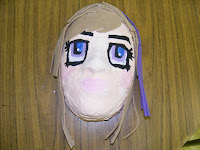Multicultural Art Education – What’s the Deal with That?
What is it?
The goal of multicultural art education is to expose and familiarize students to cultural diversity. It uses examples of traditional ethnic art and art activities to encourage them to explore both their own cultural identity, as well as others. By focusing on the art of many cultures, this method intends to peak students’ interest in learning about different ethnicities, while putting emphasis on the diverse styles and elements that make each culture unique.
In multicultural art education, art is also used to look at the history and development of a culture. Students will be able to study the traditional styles, discuss them, and, later on, practice them. The objective of this is to engage the students and allow them to have both group and independent learning, where they can form individual opinions and comprehension through art.......
Sample activities
For teachers who are thinking about trying this method, there are a number of activities which can be done in a classroom to introduce multicultural art. Some of the most common ones are listed below:
· Traditional Art Pieces – Students can look at traditional art and be taught to observe the elements and styles within the compositions. Artwork can also be compared and contrasted between different cultures. For younger grades, it is best to focus on the basics. For older grades, the development of this artwork can also be looked at, as well as more complex analysis; questions such as why certain styles or elements were used, and why these styles may have been important can be discussed.
· Practising Art Styles – Students can have the chance to create some of the styles and elements used in traditional painting. This is usually a lot of fun for them, and helps to keep them involved and interested.
............
The largest concern with most people is learning how to teach traditional cultural art. However, to teach multicultural art, you don’t have to be an expert. The main aim is to have some prior knowledge or background on the subject or culture; enough that you are able to lead a discussion and show examples.
There are many books and websites that outline activities and give instructions about how to learn a specific art style. This makes it much easier to learn the basics of cultural art, and from there, to create a step-by-step lesson plan.
Tips and Hints
Keep the class engaged. Although art is usually fun for most students, some do tend to get bored of it quickly. The key is to find activities that interest all of the students in the class, and to keep a steady pace when teaching. This might not be easy, but as students learn more about cultural art, you may find that they keep focused better.
Be prepared. There are many elements to every single kind of cultural art, and the best thing to do is to get to know them beforehand. Learn the background on the cultures you will be teaching, so that you can explain it well to the students, and answer their questions accurately. Study the artwork to understand some of the elements used before discussing them with your class, and practice the art styles before doing a lesson on them. Authenticity is huge when dealing with cultural art, so have traditional paintings by experienced artists ready to show to students as examples.
Keep it simple. Don’t give your class too much information at once. Begin with the basics, and build from there. Multiculturalism is huge area, and even simply looking at traditional art styles can take quite a while. Make sure that you develop the concept during each lesson, but don’t go too fast.
.....
Overall, multicultural art education is an area which holds a lot of potential for any teaching situation. Because it is still in development, there may have to be some experimentation in order to find a suitable lesson plan. However, the reward of a good education should be worth the effort.
Lisa Wang's report was revealing and hopefully her efforts at using multicultural art in teaching will be rewarded in students who are engaged. Here is the wiki she has on the full article and personal findings: Multicultural Art Education








